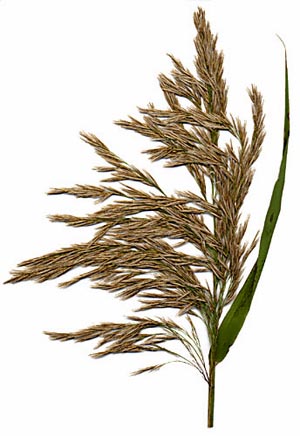Common Reed

Common Name(s):
Birchleaf Mountain Mahogany
True Mountain Mahogany
Mountain Mahogany
Alderleaf Mountain Mahogany
Scientific Name:
Cercocarpus montanus Raf.
Scientific Name Synonyms:
None known
Symbol:
CEMO2
Description:
Life Span: Perennial
Origin: Native
Season: Deciduous
Growth Characteristics: A shrub or small tree, growing 2 to 20 feet tall, with upright or spreading branches. It flowers May to June, and fruits mature from July to September. It reproduces from seed and by root sprouts.
Flowers/Inflorescence: Flowers are either solitary or in clusters of 2 to 3 flowers on short spur branchlets. They are tube-shaped, greenish-yellow in color, and lack petals.
Fruits/Seeds: Fruits are achenes, which are hard, narrow, and sharp-pointed. The seed is tipped with a persistent feathery style. Seed production is sporadic - going as long as 10 years with no seed production. Seeds are wind-dispersed, and corkscrew into the ground with the feathery style.
Leaves: Blades are alternate, oval shaped, and saw-toothed at the tip and wedge-shaped at the base, resembling a birch leaf. The top of the leaf is green to grayish-green with a tinge of yellow, with the underside being lighter and hairy. The leaf has 3-10 prominent veins.
Stems: Twigs are stout, rigid, and reddish in color. There are roughened leaf scars on the twigs, often having short lateral spurs. The bark is thin, and gray to brown in color.
Ecological Adaptions:
Birchleaf mountain mahogany occurs on rocky bluffs, mountainsides, rimrock, breaks, and in canyons and open woodlands, being very common in swales where snow lays during the winter. It grows at elevations between 5,000 and 7,000 feet. It is heat and drought tolerant. It is also somewhat shade tolerant, but grows better without an overgrowing forest canopy.
Soils: Most abundant on sunny sites with coarse, shallow, well-drained soils.
Associated Species: Gambel oak, serviceberry, bitterbrush, big sagebrush.
Uses and Management:
Birchleaf mountain mahogany is good to excellent forage for cattle, sheep, and goats. It is extremely valuable as winter browse for deer and bighorn sheep. The twigs are palatable yearlong and are grazed heavily. The leaves may contain cyanogenetic glycoside, which may cause hydrocyanic poisoning.
It is a good source of cover for livestock, big game, and many small mammals and birds.
American Indians used wood from Birchleaf Mountain Mahogany to make tools and war clubs. Hopi Indians used the bark to make a reddish-brown dye for leather.

